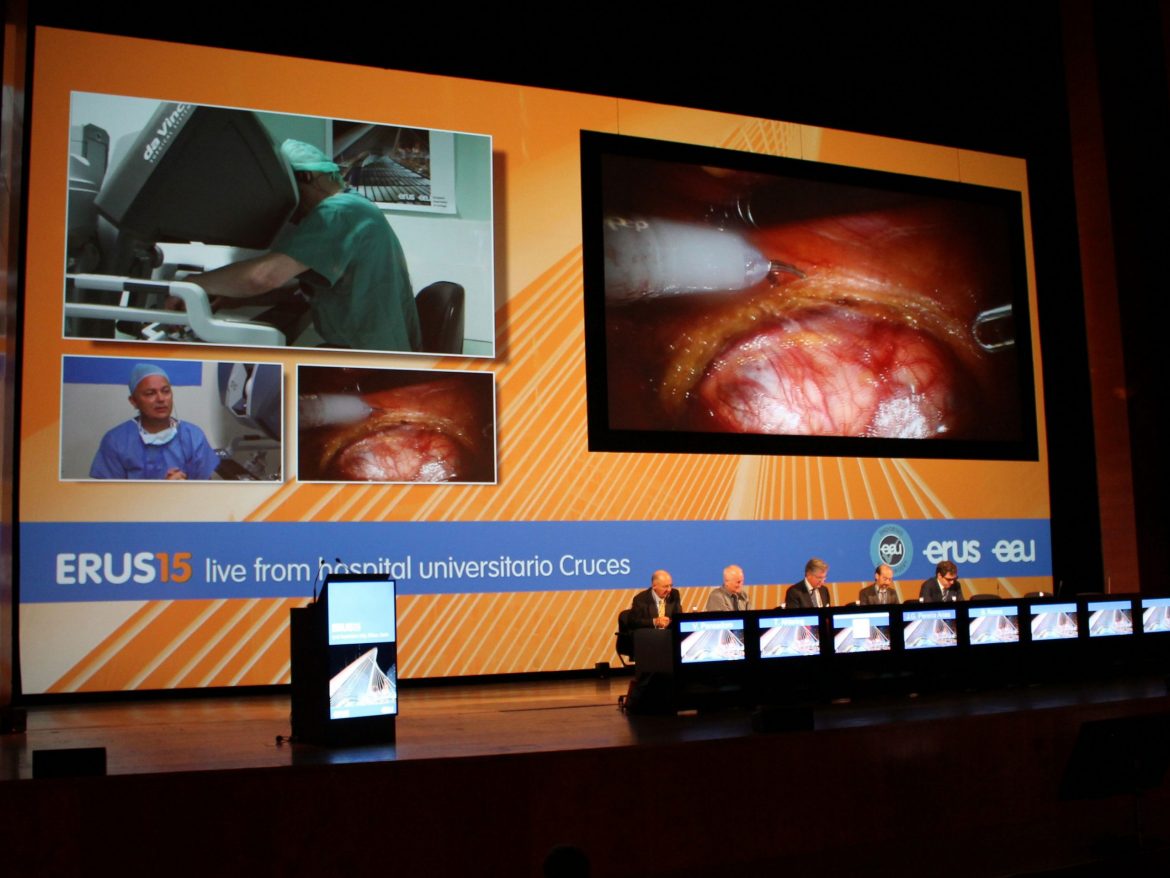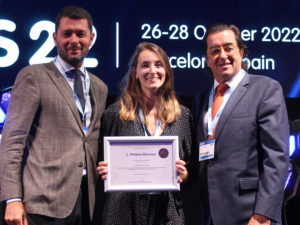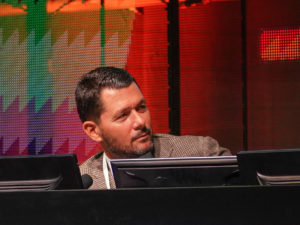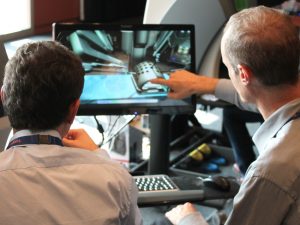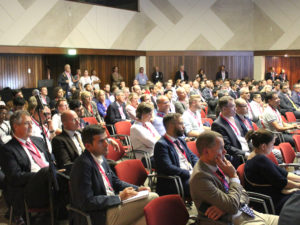While Dr. Jose Pereira Arias was joking this morning when he positioned Bilbao at the centre of the world, it certainly was the centre of the world of robotic surgery with three live surgery sessions, featuring six surgeons and six procedures. Tuesday marked the first day of the regular ERUS15 scientific programme, which mainly focused on live surgery, augmented by state-of-the-art lectures from international experts.
The first Live Surgery session went off without a hitch, with the audience being treated to a robotic partial nephrectomy courtesy of Prof. Alex Mottrie (Belgium, and a robot-assisted radical prostatectomy by Dr. Jörn Witt (Germany). Procedures were carried out at the IMQ Zorrotzaurre Clinic and the University Cruces Hospital, both in Bilbao.
Dr. Henk van de Poel (Netherlands), who was the local organiser at last year’s ERUS meeting in Amsterdam started proceedings by giving a one-year follow-up for the patients of last year’s live surgery patients. Of the eleven procedures, only one patient had complications (Grade-II), and the patient advocate did not have to intervene at any point. Of the oncological cases, 2 out of 7 showed recurrences. Prof. Walter Artibani, former EAU Adjunct Secretary General and closely involved in the establishment of the EAU’s stringent Live Surgery Policy, reiterated the importance of compiling live surgery data to compare the outcomes to those of regular procedures.
Dr. Bernardo Rocco (Italy), one of the panelists of Live Surgery Session I complimented both Mottrie and Witt with their successful procedures: “Both were challenging procedures. In the case of Prof. Mottrie, it was a very large renal tumour and he controlled the situation in an outstanding way. In the case of Dr. Witt, the prostate was very large [130gr].”
“Because the audience gets more experienced with robotic surgery every year, it’s a challenge to provide a case that really challenges them. So as a result, it’s also a challenge for the surgeons to make a didactic case when they are operating. But Mottrie and Witt both rose to the occasion and did very well.”
Prof. Vito Pansadoro (Italy) moderated the session and led the logistics of the simultaneous live 3D broadcasts. “Mottrie used his trademark technique for the partial nephrectomy, and these days we’re all using his way of suturing. He managed it with only 13 minutes of warm ischemia, which is well below the 20 minutes that I would consider safe.”
Dr. Mottrie also employed the Firefly visualization technology to evaluate the vascularization of the kidney and the cancer. Generally this allows one to do a localized ischemia, but in this case it was necessary to block the artery to the entire kidney.
“Dr. Witt’s case was challenging: because of the prostate’s size, it took a little longer than usual, with a bit more blood. The disease was aggressive and the patient had high PSA and a high Gleason score.”
Perhaps the biggest compliment to the quality of the demonstrated procedures: the audience mostly stayed in the auditorium to watch the proceedings, despite the scheduled coffee break. Live surgery sessions II and III offered two more cases of RARP, retzius-sparing robotic radical prostatectomy and radical nephroureterectomy and lymphadenectomy.
State-of-the-art Lectures
In addition to Dr. Van der Poel’s recap of the 2014 live surgery session patients, Profs. Wiklund (Sweden) and James N’Dow (United Kingdom) provided insights to the assembled audience while preparations were made for the live surgery.
Prof. Wiklund provided a Europe-wide “state of the union” with regards to the adoption of robotic surgery. Naturally, the heterogeneous nature of the continent is in contrast to the United States, and Prof. Wiklund identified three areas where this heterogeneity is most apparent: differences in Economics (reimbursement per procedure, the cost of the machine), Politics (public/private healthcare) and the training. Wiklund mentioned that in Northern Europe, 15% of robotic trainees drop out of robotic surgery after completing their training, compared to 50% in Southern Europe.
Prof. N’Dow, as Chairman of the EAU Guidelines Office took care to be as delicate as possible in order to “leave Bilbao with the same number of friends as I arrived with”. He spoke passionately on the need for transparency and ethics in the establishment of guidelines for robotic urology, as well as the importance of randomized clinical trials. “Patients shouldn’t suffer under hype. […] There is no shame in naming conflicts of interest. We need to declare them and deal with them. A committee without conflicts of interest would know nothing of robotics.”
Moderator Prof. Dasgupta (United Kingdom) assured him that he would only make more friends at ERUS15.

